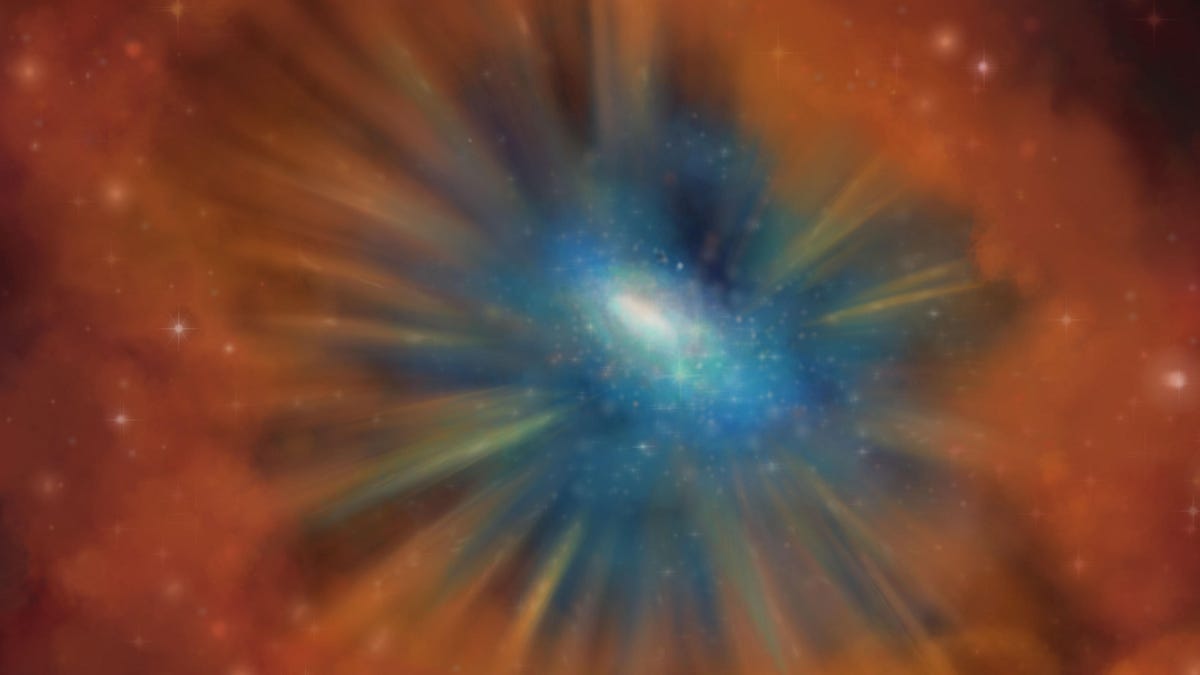Astronomers discover rare, new type of galaxy on the brink of death
Cold quasars offer a glimpse of active galaxies heading for cosmic retirement and hint at the ultimate fate of the Milky Way.

The brink of death is very dusty for a cold quasar.
Astrophysicists at the University of Kansas have spotted an incredibly rare type of galaxy for the first time, fundamentally changing our understanding of how galaxies die. At the 234th meeting of the American Astronomical Society on Thursday, Allison Kirkpatrick presented her discovery of "cold quasars", incredibly bright, dying galaxies in the farthest reaches of the cosmos.
Quasars are basically mammoth supermassive black holes surrounded by huge amounts of gas and dust, making them super bright -- much brighter than a typical galaxy. They can be created when two galaxies merge and their black holes collide. For instance, our galaxy, the Milky Way, is on a collision course with the neighboring Andromeda galaxy. This event, which will occur billions of years from now, will signal the end of the two galaxies and the creation of a quasar.
Eventually, the gas and dust will start falling into the center of the quasar and be blown out into space. Astronomers have speculated that this point is basically the end of a galaxy's life, when it has lost the ability to form new stars and becomes "passive", but Kirkpatrick and her team discovered that a small fraction of these cold quasars were still forming new stars.
The researchers examined the sky with X-ray and infrared telescopes and found 22 quasars at a distance of 6 to 12 billion light years away exhibiting unusual signatures. They looked like they were in the end stages of their life when viewed optically, however, they still emitted a bright, far infrared signature with a lot of dust and cold gas in them.
During the press conference, Kirkpatrick postulated if we could zoom in and see one of these quasars, it would be kind of like a donut. In the center of the galaxy we'd see a dead zone, where the quasar has blown away most of the gas and dust. Around the outside, we'd find a star-forming region still plentiful with the gas and dust.
"These galaxies are rare because they're in a transition phase," said Kirkpatrick in a press release. "We've caught them right before star formation in the galaxy is quenched, and this transition period should be very short."
Incredibly strong winds would be moving through the galaxy, so this period would only last for around 10 million years -- a blink of an eye in the universe's timelines. Thus, these cold quasars are incredibly rare, and spotting one is an important step in working out how galaxies mature, live and eventually die.
Is this the ultimate fate of our own galaxy? Kirkpatrick thinks so. However, that's 3 to 4 billion years away and we'll have other problems by then, like an expanding sun ready to swallow the Earth whole.

